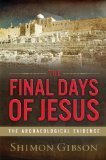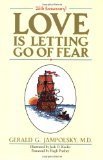Lee Harmon's Blog, page 141
January 16, 2011
Book review: Paul


by Walter Wangerin Jr.
★★★★★
You may know Wangerin from The Book of the Dun Cow. I love Wangerin's writing and I loved Paul. From the insatiable and inexplicable drive of the book's hero, Paul of Tarsus, to the endearing antics of his biggest fan Titus, this is a captivating story in a fascinating era.
Wangerin knows his Bible; that much is clear, yet he makes the Bible fun. When you grow up in a church atmosphere, Bible characters become legend, untouchable, bigger than life. This book brings them back to earth and gives them breath. Paul, especially, becomes human again. Love him or hate him, you will admire him and shake your head in wonder at his passion.
Readers of my reviews know fiction is not my favorite. It has to be historical and well-researched, it has to be thought-provoking, and it has to be moving, for fiction to make the top shelf. This one has it all.
Published on January 16, 2011 08:13
January 15, 2011
Jude 1:14-15
Enoch, the seventh from Adam, prophesied about these men: "See, the Lord is coming with thousands upon thousands of his holy ones to judge everyone, and to convict all the ungodly of all the ungodly acts they have done in the ungodly way, and of all the harsh words ungodly sinners have spoken against him."
//These verses are a direct quote from the ancient book of Enoch, chapter one, verse nine. Enoch was quite popular among first-century Christians: Jude, 2 Peter, and Revelation all freely quote from Enoch. One can hardly make sense of parts of Revelation without first reading the tenth chapter of Enoch, but in the fourth century, the church suppressed this book as heretical due to its references to the physicality of fallen angels (called "Watchers"), accused of having sexual relations with the "daughters of men." Yet, Genesis 6 confirms this story, where we learn about the offspring of the Watchers, called "Nephilim": In those days, and even afterward, giants lived on the earth, for whenever the sons of God had intercourse with human women, they gave birth to children who became the heroes mentioned in legends of old (NLT).
The blacklisted book of 1 Enoch remained underground for 1400 years until rediscovered in 1773, though more recently it surfaced several times among the Dead Sea scrolls, which pushes its date back to at least 100-200 BCE, and presumably earlier.
So what do you think? Is Enoch inspired scripture or not?

//These verses are a direct quote from the ancient book of Enoch, chapter one, verse nine. Enoch was quite popular among first-century Christians: Jude, 2 Peter, and Revelation all freely quote from Enoch. One can hardly make sense of parts of Revelation without first reading the tenth chapter of Enoch, but in the fourth century, the church suppressed this book as heretical due to its references to the physicality of fallen angels (called "Watchers"), accused of having sexual relations with the "daughters of men." Yet, Genesis 6 confirms this story, where we learn about the offspring of the Watchers, called "Nephilim": In those days, and even afterward, giants lived on the earth, for whenever the sons of God had intercourse with human women, they gave birth to children who became the heroes mentioned in legends of old (NLT).
The blacklisted book of 1 Enoch remained underground for 1400 years until rediscovered in 1773, though more recently it surfaced several times among the Dead Sea scrolls, which pushes its date back to at least 100-200 BCE, and presumably earlier.
So what do you think? Is Enoch inspired scripture or not?
Published on January 15, 2011 09:36
January 14, 2011
Book review: the Final Days of Jesus

 by Shimon Gibson
by Shimon Gibson★★★★★
If you're interested in the historical Jesus, you'll be fascinated by this book. Shimon is a thorough researcher and archaeologist. He is up-to-date on current scholarship, while at the same time providing new insights and theories, with a writing style that keeps you reading. Shimon excels in vividly portraying the everyday life of Jesus and his times. You'll learn the geography, the rituals, and the lifestyle of first-century Jews as you walk in the shoes of Christ through the final days of his life.
Shimon cautions that "some of my conclusions regarding Jesus and Jerusalem may be controversial," but throughout the book I found all of his arguments to be logical and carefully documented.
I'm one of those fanatics that marks his books up with highlights and margin notes, and this is one of those books where I've got bright paragraphs and blue ink on every other page. I sometimes look over my notes as I prepare to write my reviews, but I simply don't have the time to reread everything this book taught me. I'll just leave it at this: If a book's value can be measured by how much you learn from it, then this one deserves the praise I give it.
(click picture to buy on Amazon)
Published on January 14, 2011 07:36
January 12, 2011
Genesis 6:19-20
You are to bring into the ark two of all living creatures, male and female, to keep them alive with you. Two of every kind of bird, of every kind of animal and of every kind of creature that moves along the ground will come to you to be kept alive.
// Many people recognize that there are two creation stories in the Bible. Chapter 1, plus three verses of chapter 2, is written by a different author than the story which begins in verse 2:4. The first story, which details the seven days of creation, was penned by an author Bible scholars call the "Priestly source." The second story, which emphasizes the Garden of Eden, was penned by the "Yahwist." The writing styles are different, the words used for God used are different. (Yes, the Yahwist is most easily identified by his use of God's holy name: YHWH).
But did you know there are also two versions of the flood story? This is more difficult to determine, because the two stories are masterfully spliced together. But, once separated, it's as plain as the nose on your face.
Two of every species went into the ark? Yeah, the above verse is the Priestly source's version. He clearly says two of every kind of bird, but the Yahwist, who needs spare animals for Noah to sacrifice, says that there will be seven of each type of bird. In the Priestly source, Noah sends out a raven. For the Yahwist, it's a dove. The flood lasts a year for the Priestly source. Only 40 days for the Yahwist.
Fascinating stuff! We'll talk more about Noah in a later post.
// Many people recognize that there are two creation stories in the Bible. Chapter 1, plus three verses of chapter 2, is written by a different author than the story which begins in verse 2:4. The first story, which details the seven days of creation, was penned by an author Bible scholars call the "Priestly source." The second story, which emphasizes the Garden of Eden, was penned by the "Yahwist." The writing styles are different, the words used for God used are different. (Yes, the Yahwist is most easily identified by his use of God's holy name: YHWH).
But did you know there are also two versions of the flood story? This is more difficult to determine, because the two stories are masterfully spliced together. But, once separated, it's as plain as the nose on your face.
Two of every species went into the ark? Yeah, the above verse is the Priestly source's version. He clearly says two of every kind of bird, but the Yahwist, who needs spare animals for Noah to sacrifice, says that there will be seven of each type of bird. In the Priestly source, Noah sends out a raven. For the Yahwist, it's a dove. The flood lasts a year for the Priestly source. Only 40 days for the Yahwist.
Fascinating stuff! We'll talk more about Noah in a later post.
Published on January 12, 2011 07:40
January 11, 2011
Book review: Love is Letting go of Fear
 Buy on Amazon
Buy on Amazon by Gerald G. Jampolsky, MD
by Gerald G. Jampolsky, MD★★★★★
This book is not the usual type of selection for a religion blog, is it? I'm not sure God is even mentioned in the book. But Love is, and God is Love, right? For all you Bible scholars out there, we shouldn't get so wrapped up in our fascinating scholarly pursuits that we forget the reason for our religion in the first place.
At the risk of over-analyzing a simple book with a simple message, I confess it struck a chord with me partly because of my recent studies in the Gospel of John. Here's why: like many scriptures, this book pits good against evil as clearly as God versus Satan, only this time it's love versus fear. If, at the moment, one of the two (love or fear) is guiding your actions and thoughts, the other is not. Why? Well, according to Jerry, it's because love lives in the present, and fear lives in a reflection of the past into the future. This is a lesson taught over and over. Let go of the past and future, and live in the present.
As Jerry says in the book, "Wouldn't our lives be more meaningful if we looked to what has no beginning and no ending as our reality? Only Love fits this definition of the eternal. Everything else is transitory and therefore meaningless."
Now, doesn't that sound an awful lot like John, the Gospel of Love? Eternal life is ours for the grasping, by living in the eternal now. I'm reminded of another book review I just completed: My Stroke of Insight.
This is a short little book with cute illustrations that you can read in a couple hours. It's a 25th anniversary reprint of a book that made a big splash in 1974, and it's worth the two-hour investment.
Published on January 11, 2011 06:00



